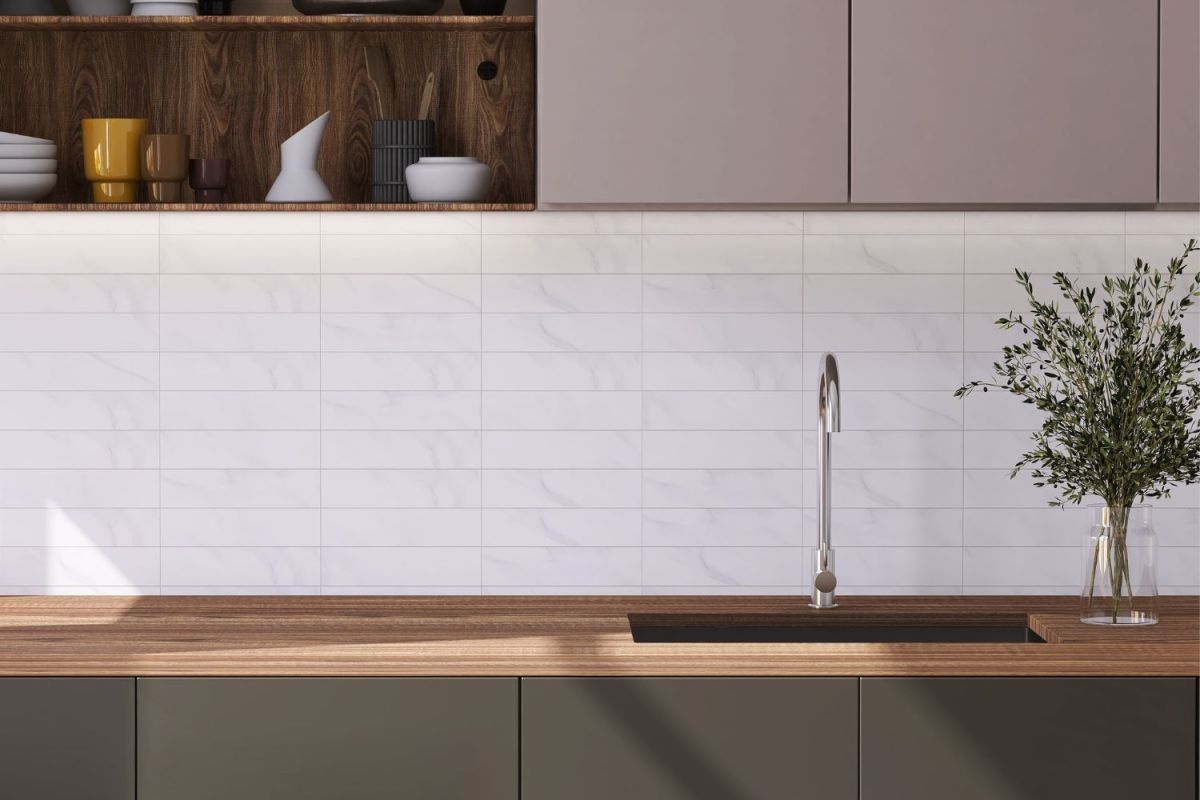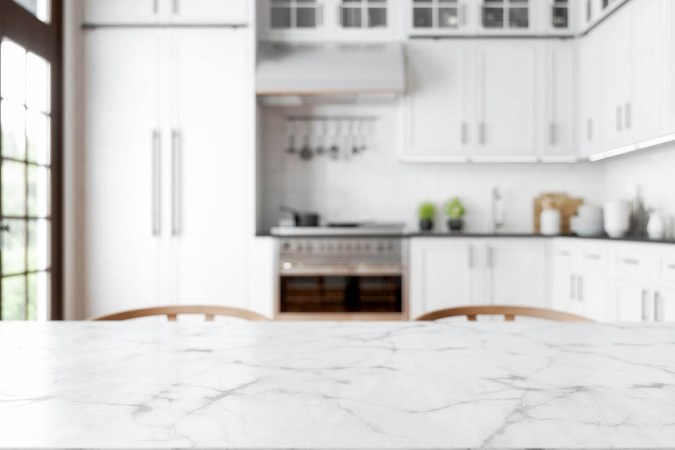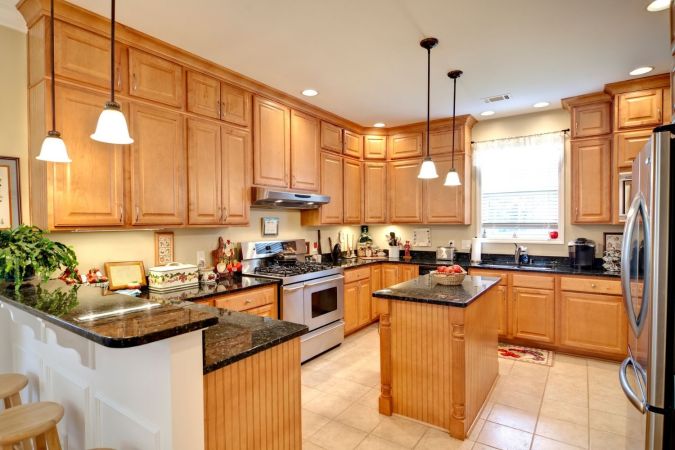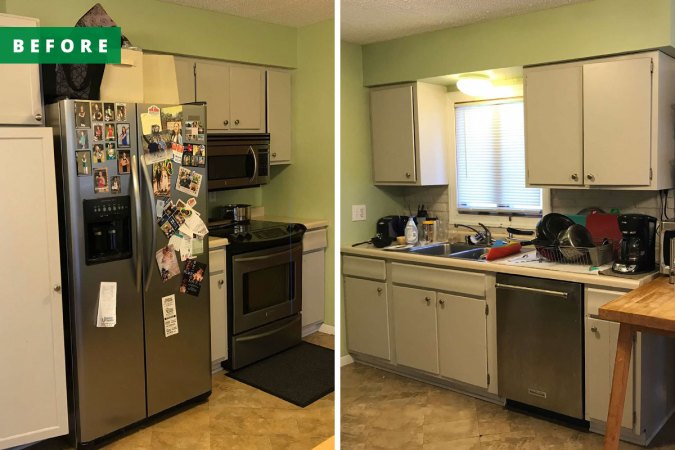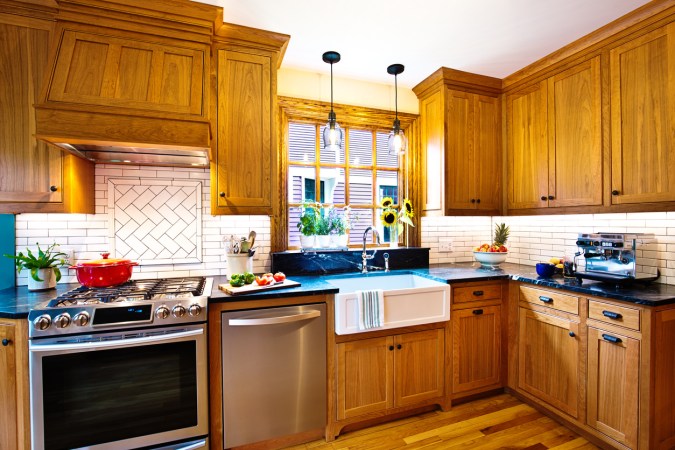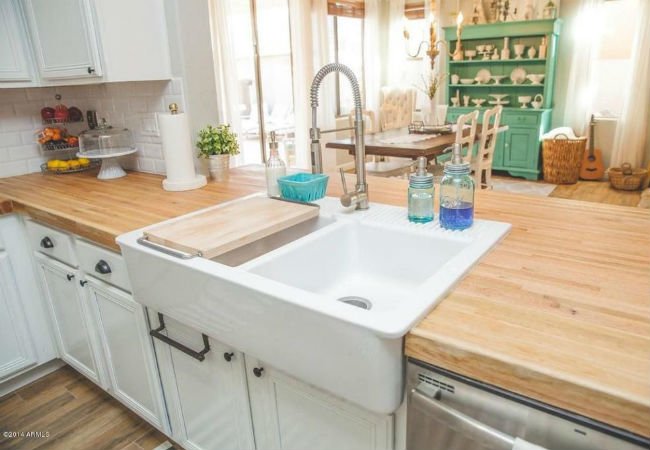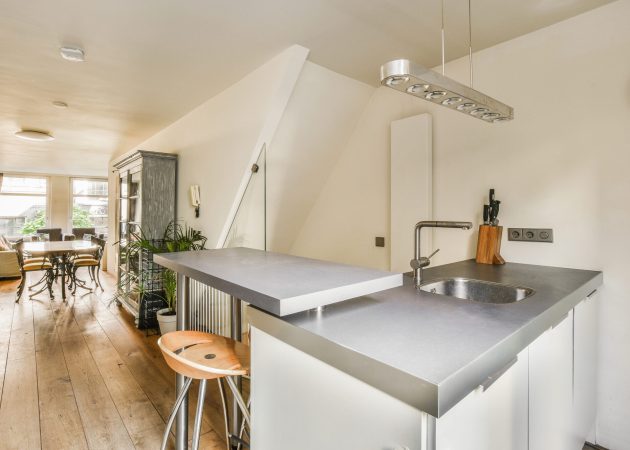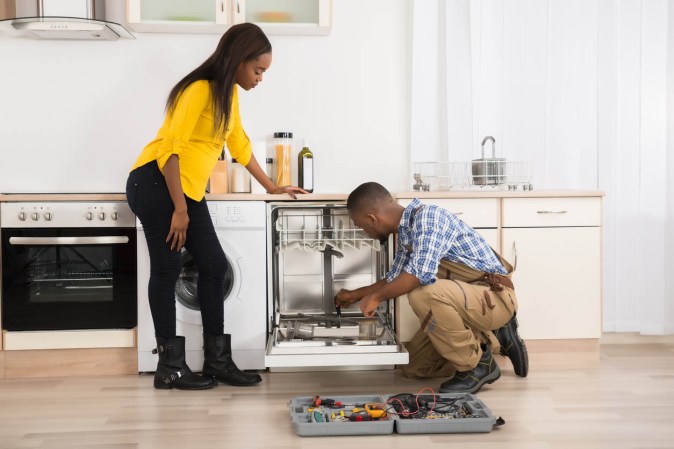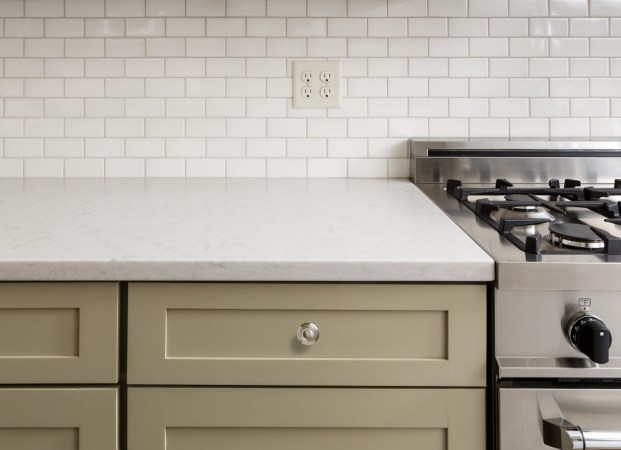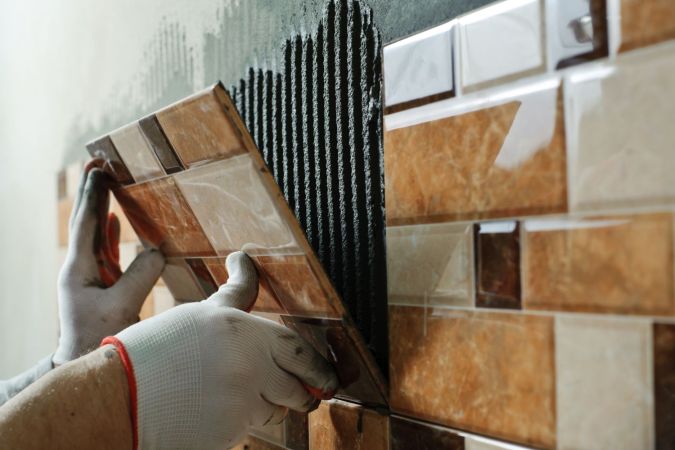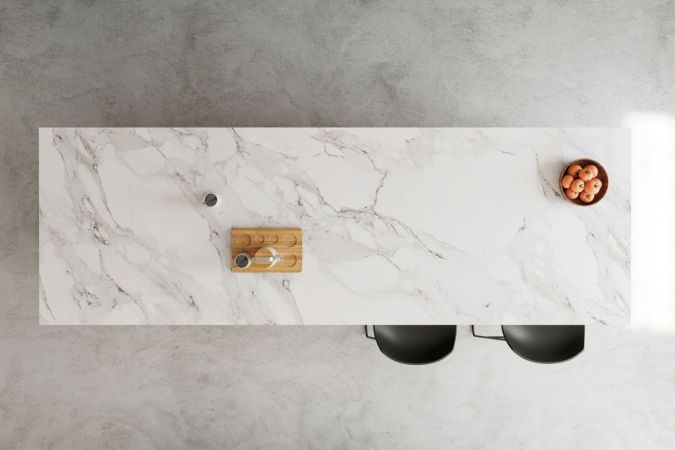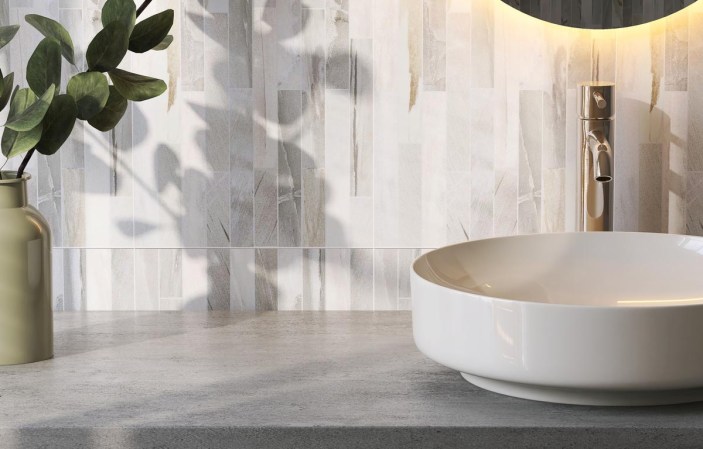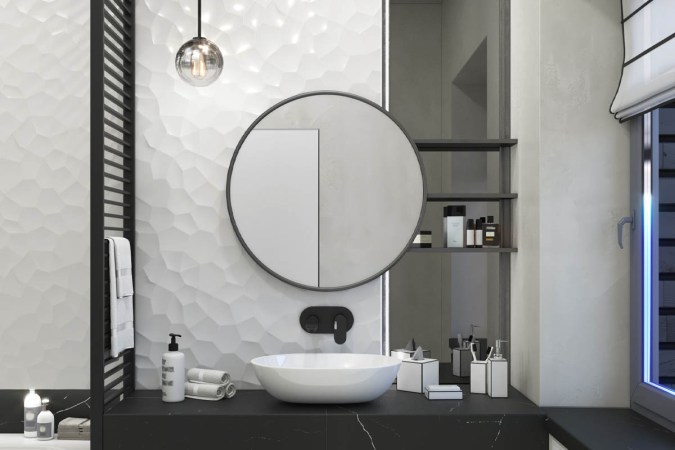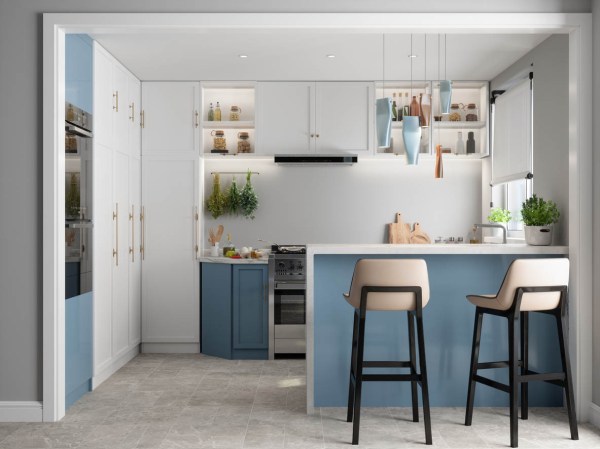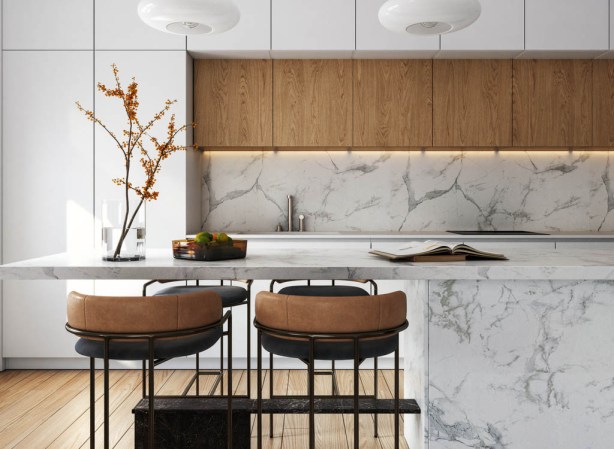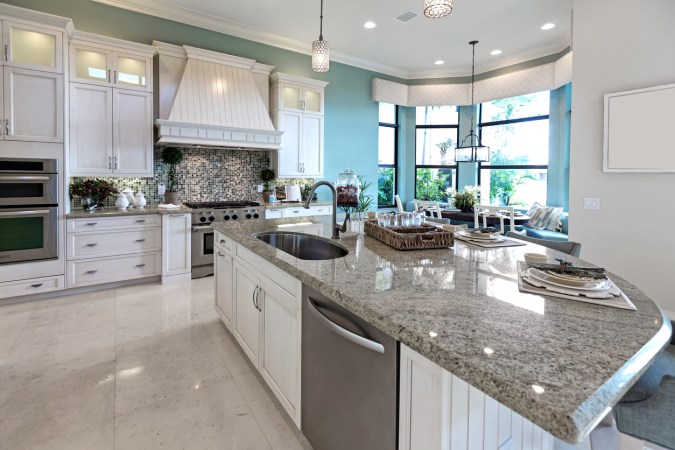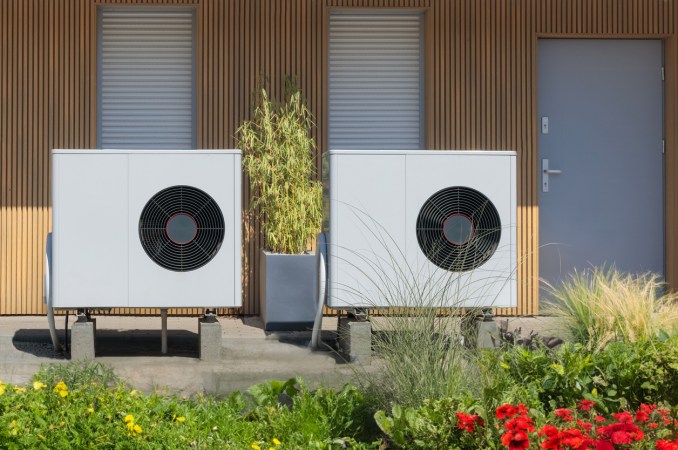We may earn revenue from the products available on this page and participate in affiliate programs. Learn More ›
Highlights
- The average kitchen backsplash cost is $1,000, though a typical range is between $600 and $1,300.
- The size of the backsplash and the materials selected are the two biggest factors for calculating the cost of a kitchen backsplash. Labor rates, existing backsplash removal, and other remodeling costs are additional factors to consider.
- Kitchen backsplashes make it easy for homeowners to clean the wall and keep odors down, plus they can appeal to potential buyers and deter pests.
- A peel-and-stick style of backsplash may be easy to DIY install, but most homeowners prefer to let a professional installer deal with cutting tiles and fitting them to ensure a properly aligned design.
Installing a kitchen backsplash can add a functional design element that really brings the kitchen together. Plus, backsplashes make cleaning easier and may even increase the resale value of the home. The typical kitchen backsplash cost, according to Angi, is between $600 and $1,300, with the national average falling right around $1,000, including installation.
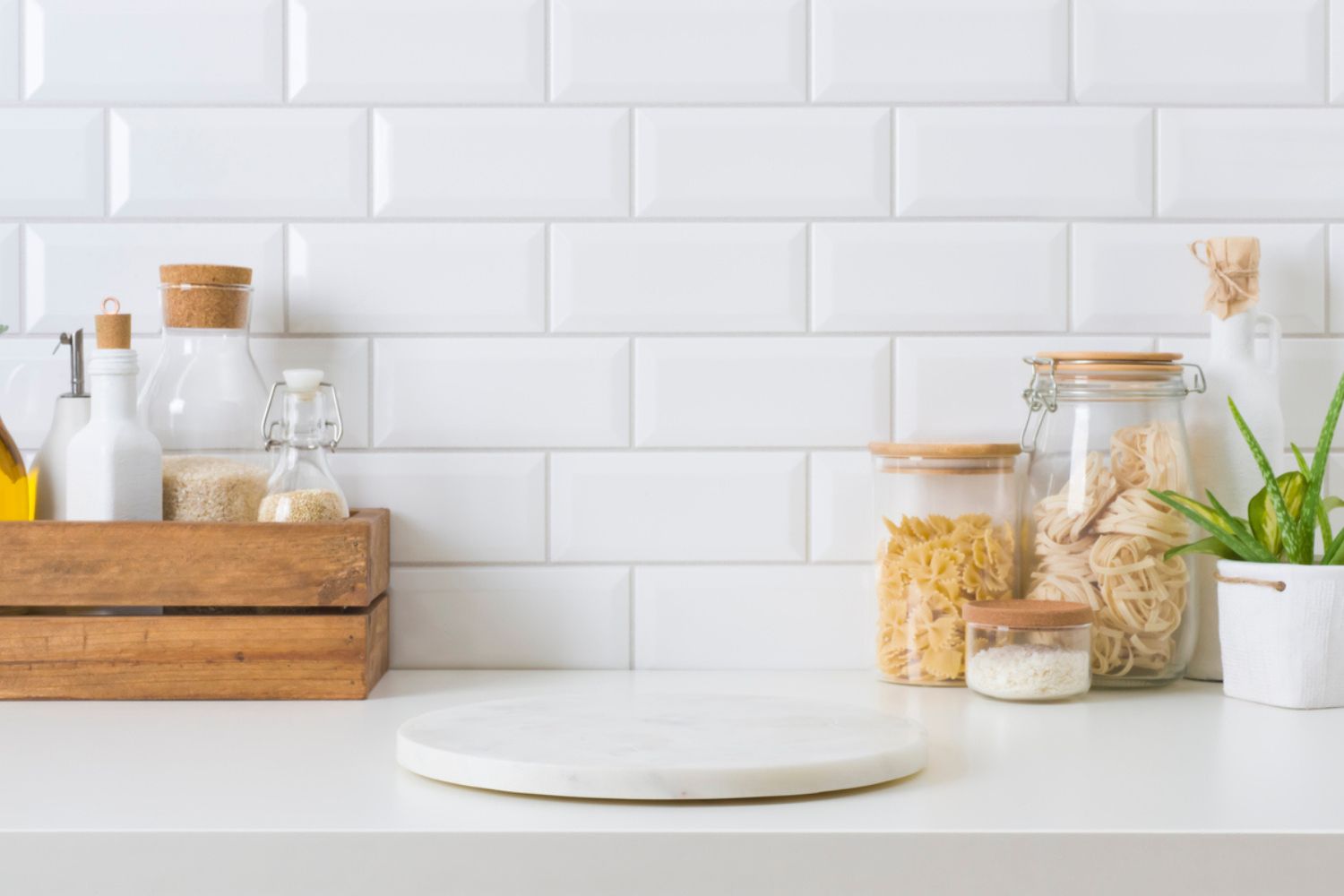
Factors in Calculating Kitchen Backsplash Cost
The average cost to install a backsplash is highly dependent on the size of the backsplash, since it’s typically calculated by the square foot. The backsplash material chosen by the homeowner also dictates the final kitchen backsplash price. And the labor to install it along with any supplies will round out the cost.
Backsplash Size and Style
The size of the backsplash is one of the most important factors in determining the cost to install a kitchen backsplash, as the cost is typically measured per square foot of material plus labor. Backsplashes made from less expensive material, such as a porcelain or ceramic tile kitchen backsplash, can cost $2 to $6 per square foot, while more expensive material, such as marble, can cost up to $130 per square foot before labor.
Depending on the material, larger backsplashes usually cost more than smaller backsplashes, though it’s possible that a smaller backsplash with a more expensive material could cost more than a large backsplash with less expensive material.
The style or design of the backsplash can also affect the cost. Individual tiles can take longer to arrange and install than an adhesive backsplash that doesn’t require grout or spacers. A peel-and-stick kitchen backsplash can cost around $4 per square foot but could cost as much as $30 per square foot for high-quality tiles. If homeowners choose a low-cost tile, they’ll still need to factor in the cost of supplies such as grout and caulk and the additional labor required to install it.
“If possible, view an elevation of your kitchen walls to make sure the scale and pattern of the backsplash looks good,” advises Susan Serra, certified kitchen designer and president of Susan Serra Associates, Inc. “When looking at material samples, don’t only look at them close up. Look at samples from a distance as well as what seems like a pattern close up may almost disappear when viewed at a distance.”
Backsplash Material
Along with the size of the backsplash, the material is another important factor when homeowners are calculating the total cost of a kitchen tile backsplash. Cheaper materials, such as ceramic, porcelain, and beadboard, are typically priced around $2 or $3 per square foot. High-end materials, such as natural stone and stainless steel, can start at $7 per square foot and cost up to $65 per square foot. Luxury materials, such as marble, can cost $130 per square foot. These estimates are for materials only, so homeowners will need to factor in labor costs as well.
“Today’s technological advancements in tile manufacturing is good news for homeowners,” explains Serra. “There are so many durable yet low cost options for tile. Look at large format tiles that come as large as 36 by 72. These extra large tiles will give the appearance of slab material for a perfect solution if a full stone backsplash is beyond the budget. Check out vinyl wallpaper! There are lovely patterns such as grasscloth that will give a warm, soft look but with a matte finish, will look just like typical wallpaper. Make sure a tile molding is used at the countertop level to hide gaps between the countertop and wall behind it.”
Labor
Backsplash installation cost falls between $15 and $45 per square foot for labor and materials. Contractors typically charge labor at an hourly rate between $40 and $60, but labor costs can reach $100 per hour or more for complicated designs or patterns. If the area has a lot of outlets, additional time and materials may be needed to work around them and keep the design lined up properly. Additionally, labor rates can vary widely depending on geographic location, time of year, and current demand.
Additional Costs and Considerations
In addition to the materials, there are other factors to consider when it comes to the kitchen backsplash cost that may or may not apply. For instance, existing backsplash removal, additional electrical work, tile versus slab installation, and additional kitchen renovations will all factor into how much to install a backsplash.
Existing Backsplash Removal
If there is an existing backsplash, it will need to be removed before the new one can be installed. Sometimes backsplash removal creates other costs as well, such as extra finish, electrical, or drywall work. Contractors often charge between $3 and $6 per square foot to remove the old backsplash, but if it’s discovered that the drywall behind it is damaged, it may need to be repaired or replaced at an additional cost. Sometimes a contractor may also need to install a concrete or cement backer board to keep moisture out.
Electrical Work
Installing a modern kitchen backsplash often requires electrical work if the homeowner wants to have outlets installed or moved. GFCI, or ground fault circuit interrupter, outlets are often installed in kitchens to protect against power surges and electrical imbalances. It’s best to have these installed by a qualified electrician. GFCI outlets cost between $130 and $300, including labor and supplies.
Tile vs. Slab
Choosing individual tiles versus a slab of marble or granite will impact the cost, but it’s not always clear exactly how. Slabs are often more expensive than tiles, since they are custom fit to the project and cut from one larger piece of the material. But since they’re already cut to size, installation may go a little faster, which could cut down on tile installation costs.
Due to their size, slabs are best installed by professionals who are familiar with handling large pieces of stone and installing them without causing damage. Getting estimates and comparing pricing is the best way to determine the cost difference between installing tiles and a slab of marble or granite.
Full Kitchen Remodel
A full kitchen remodel costs an average of $26,240 and can include things like the cost of kitchen cabinets and countertops, new flooring, appliances, fixture upgrades, and more. Incorporating a new backsplash into the kitchen remodel can potentially reduce the backsplash installation price, since the backsplash installers will already be on-site and working on other projects during the remodel. The best kitchen remodeling companies such as Granite and TREND Transformations or Kitchen Tune-Up can help homeowners budget and plan the perfect update to their kitchen for their own comfort or as preparation for a home sale.
Kitchen Backsplash Cost by Type of Material
The biggest factors determining the cost of installing a kitchen backsplash are the size of the backsplash and the material. Backsplash material can even affect the cost to install the backsplash per square foot. Costs can vary widely and influence not only the cost of the project but also the backsplash’s durability and aesthetics.
| Type of Kitchen Backsplash | Average Cost per Square Foot |
| Beadboard | $2 to $10 |
| Brick | $10 to $40 |
| Ceramic | $2 |
| Glass | $30 |
| Granite | $5 to $14 |
| Marble | $20 to $130 |
| Natural Stone | $7 to $45 |
| Porcelain | $3 to $6 |
| Slate | $6 to $20 |
| Stainless Steel | $15 to $65 |
| Tin | $10 to $30 |
| Travertine | $3 to $9 |
Beadboard
Beadboard is a great addition to a rustic or farmhouse kitchen design. Made of wood strips attached to a backboard, beadboard can be painted to match the kitchen’s color scheme. As an added benefit, it’s a low-cost option at $2 to $10 per square foot, making it an ideal material for a backsplash on a budget. However, it can be difficult to clean due to the grooves in between the wood strips, so homeowners may want to keep that in mind if they choose this material.
Brick
Brick is a timeless material that can be both traditional and industrial depending on the surrounding decor. It costs between $10 and $40 per square foot to install a brick backsplash. Due to its rough texture, brick can be difficult to clean, which is another consideration homeowners will want to factor into their decision.
Ceramic
Ceramic is a popular material and typically chosen for its durability and low maintenance. It comes in a wide range of colors, so it’s a great option if the homeowner wants a black, white, blue, or green backsplash kitchen. Plus, it costs only around $2 per square foot, which makes it one of the lower-cost materials.
Glass
A glass tile kitchen backsplash is a unique look that could be a perfect backsplash idea for a white kitchen, but it can work in nearly any kitchen design. It comes in a wide variety of patterns, shapes, and sizes and adds an attractive shine to the backsplash area. And it’s easy to clean as well. Glass backsplash installation cost averages about $30 per square foot.
Granite
A granite backsplash is a highly durable option that is easy to clean. This material is popular and costs between $5 and $14 per square foot. Granite comes in natural colors that range from light beige to darker hues for those wanting a black backsplash kitchen.
Marble
Marble is a luxury kitchen backsplash material that adds a touch of sophistication to a high-end kitchen and is often paired with marble countertops. The wide cost range—from $20 to $130 per square foot—is a result of the large variation in quality and cost of marble. Homeowners can expect to pay around $10 to $20 per square foot for labor on top of the material cost.
Natural Stone
Natural stone is another luxury material that adds a unique touch to a kitchen backsplash. Since it’s natural, each stone tile will have a unique pattern that adds a warm touch to the kitchen. Natural stone tiles cost between $7 and $45 per square foot.
Porcelain
Porcelain backsplash tiles are cost-effective and highly durable. They also have a wide range of shapes, colors, and styles that give homeowners many design options and can even mimic other materials like wood and marble. Porcelain tiles cost between $3 and $6 per square foot.
Slate
Slate is a natural material that adds warmth and sophistication to a kitchen. While slate is typically gray, depending on the chemical makeup of the actual slate, it can also come in green, blue, red, and black variations. Slate backsplash tiles cost about $6 to $20 per square foot.
Stainless Steel
Stainless steel is a great choice for an industrial-looking kitchen, and since it’s so easy to clean, it’s also a great choice for busy cooks who don’t want to spend a lot of time cleaning. But these benefits come at a cost; stainless steel is a more expensive kitchen backsplash option, running between $15 and $65 per square foot.
Tin
Tin is a unique option that can bring character to a backsplash with stamped patterns. It’s more expensive than some other materials, costing $10 to $30 per square foot, but as part of the right design, it might be worth the added cost.
Travertine
Made from limestone, travertine tiles are a unique choice that can add luxury to a kitchen. These tiles cost between $3 and $9 per square foot.
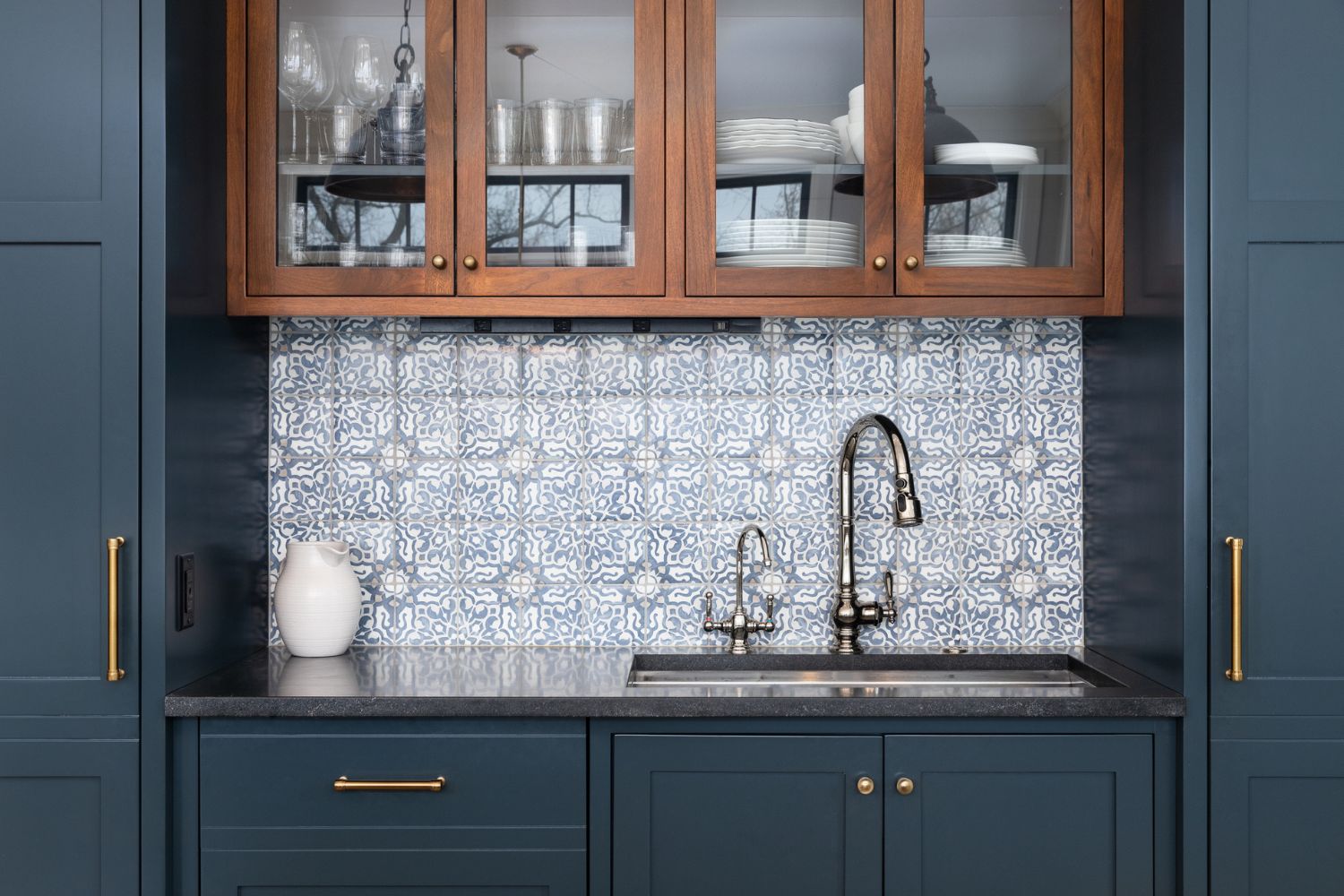
Benefits of Installing a Kitchen Backsplash
Is a backsplash a requirement? According to Serra, not necessarily. “The short answer is no, there is no REAL need for a kitchen backsplash,” she says. However, she goes on to explain that “There are more cons than pros if a backsplash isn’t used in favor of a painted wall.”
Installing a kitchen backsplash can offer a number of benefits for the homeowner and the kitchen. It can enhance the kitchen decor, and it makes cleaning up behind the stove and counters easier, especially if homeowners choose an easy-to-clean material. High-end materials like marble and stainless steel can add to the home’s value, since a remodeled kitchen is often considered one of the most appealing rooms in a home.
Easier Cleaning
Kitchens often have a lot going on, and they can get messy quickly. Adding a kitchen backsplash can make cleaning behind the counters and stove much easier, especially if homeowners choose an easy-to-clean material such as ceramic or stainless steel. Grease can quickly build up on the wall behind the stove, so having a backsplash in place to easily wipe clean can help keep odors and unsightly stains at bay.
Moisture and Pest Protection
Backsplash materials are made to withstand moisture so they’ll stand up to the steam and heat that are generated in a kitchen. Backsplashes can also deter pests because they protect the wall and make it harder for insects and rodents to get through.
Enhanced Kitchen Decor
Installing a kitchen backsplash can add a decor touch that the homeowner didn’t even know was missing. Kitchen backsplashes have a knack for bringing the whole room together, whether they match the countertops or stand as an interesting contrast.
Increased Home Value
Kitchen backsplashes are one of the little touches that can increase the home’s value and appeal to potential buyers, especially if they’re made of a higher-end material such as marble, stainless steel, or tin.
Kitchen Backsplash Installation: DIY vs. Hiring a Professional
For homeowners who regularly work with tile and grout, a DIY kitchen backsplash may be a project worth considering. Proper tools and equipment are needed to cut materials such as porcelain and tin, so homeowners will have to factor in those additional costs. Otherwise, some homeowners opt to do an easier adhesive backsplash, though this style is not as durable as most other materials. If there is any electrical work involved, it’s important to call in a qualified electrician to safely install or move any outlets or lighting.
“Homeowners can DIY their kitchen backsplash IF they are generally handy, have quality tools and have read up on installation methods,” says Serra. “Don’t forget how-to YouTube videos!”
Saving a few dollars on a small remodeling project appeals to a lot of homeowners, but they often find themselves spending more money on extra materials and tools, since they’re unfamiliar with proper installation techniques. Tiles can break easily when cut improperly, and getting a pattern or design to line up exactly can be difficult and frustrating. What could be a 2-day job for an installer often turns into a several-day job for DIYers. That’s why so many homeowners prefer to outsource the job to a professional installer.
“Hire a professional who works on kitchens frequently, not just a few times a year,” advises Serra. “There are many nuanced installation methods the pros use as well as using their tricks of the trade.”
A pro is experienced at handling different types of materials from stone to glass and is usually responsible for any breakage that happens during installation. This can save homeowners on some material costs. Additionally, a professional will have the time and know-how to get the job done in the estimated time, which leaves homeowners free to do other important tasks around the house or with the family.
As Serra explains, “Hiring a pro to install a backsplash greatly reduces the risk of installation errors. Trade pros will take time to fully understand the job site conditions before beginning the installation and will have a plan to follow.”
How to Save Money on Kitchen Backsplash Cost
Kitchen design costs using an interior designer are higher than the cost to install a backsplash, which means choosing their own backsplash material is an easy way for homeowners to update their kitchen without spending a ton of money. Kitchen backsplash installation can be fairly affordable or quite the investment, depending on the size of the backsplash and the materials chosen. But if the time has come to work it into the budget, then there are a few ways to save some money on the kitchen backsplash cost.
- Choose a lower-cost material. Instead of expensive marble or stainless steel, homeowners are advised to choose a lower-priced material like porcelain or ceramic.
- Don’t be swayed by trends. “Don’t just look at the latest trends in backsplashes,” warns Serra. “Be open minded to new design ideas to make the backsplash reflect your personal aesthetic. That’s the solution to a timeless kitchen.” This can avoid the need to replace the backsplash due to an outdated design.
- Combine projects. Planning projects at the same time can reduce labor costs and trip fees. If homeowners have additional kitchen renovation projects, they can have the backsplash installed at the same time as the countertops to potentially save money on the cost of the countertops and backsplash.
- DIY an adhesive backsplash. Homeowners can install a peel-and-stick adhesive backsplash on their own to save on labor and materials costs, though it’s not as durable as a traditionally installed backsplash. They’ll still need to factor in their own time and potentially higher material costs if extra sheets are needed to account for any mistakes.
- Obtain multiple quotes. Homeowners are advised to get quotes from multiple kitchen remodeling companies to compare prices and services.
- Choose a smaller area. To save on costs, homeowners can opt to install a backsplash in smaller strategic areas—only behind the stove or sink, for instance.
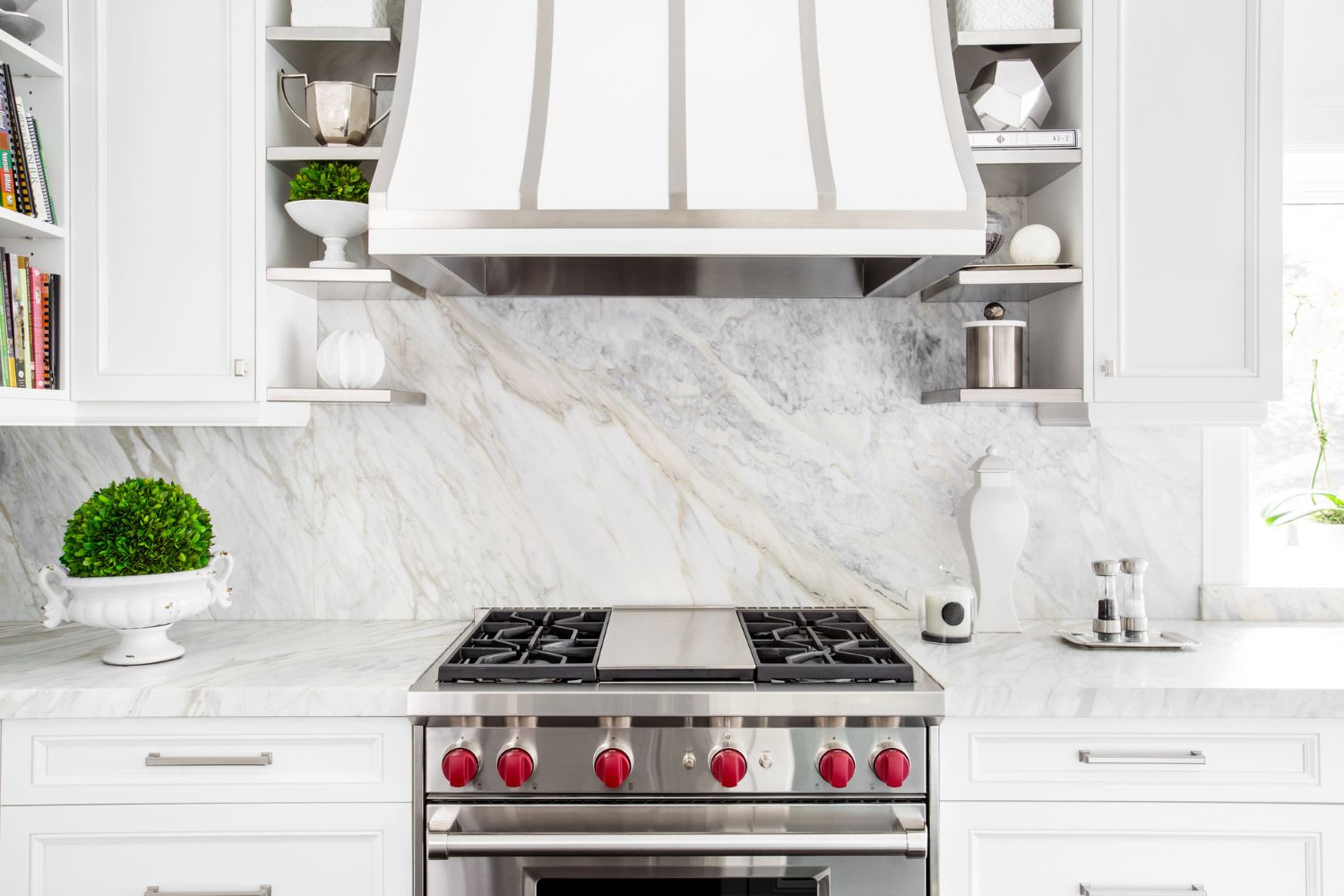
Questions to Ask About Kitchen Backsplash Installation
Asking questions while discussing a project with contractors can give homeowners a good idea of how contractors will complete the work and whether they’ll be professional to work with or not. The right questions can guide homeowners to a reliable contractor who will do quality work.
- Do you provide a written quote? How accurate do your quotes tend to be?
- Have you worked with this particular tile before?
- What materials do you use for installation?
- Can you do a dry-lay to give me an idea of how the final product will look?
- How much will it cost to remove the existing backsplash?
- Will you need to repair the drywall or install cement backer board?
- How long will the project take?
- Do I need to be home during installation?
- Will you need to subcontract to an electrician or drywaller?
- Do you offer any discounts?
- Who do I contact if there is a problem after the installation is completed?
FAQs
Installing a kitchen backsplash is a relatively easy and affordable kitchen upgrade. But choosing the material and deciding when to install it as part of a larger kitchen remodel can bring up some questions. Here are a few frequently asked questions and their answers to help homeowners feel confident about the project.
Q. Should you install the countertops or backsplash first?
Countertops should be installed first. This ensures that the backsplash is installed in the right place and level to the countertop. Also, since the countertop material and design typically determines the preferred look of the backsplash, installing the countertop first allows homeowners to select the right backsplash to tie the design together.
Q. What is the most low-maintenance backsplash material?
The most low-maintenance backsplash materials are ceramic, porcelain, metal, and glass. Their maintenance needs are typically just a quick wipe down after cooking to remove any grease or splatters. If the tiles have grout lines, the grout should be sealed periodically to maintain its color and protect it from moisture.
Q. How long does it take to install a backsplash?
The time required to install a backsplash depends on the size of the backsplash, the size of the tiles, and the skill of the installer. Generally speaking, a full kitchen backsplash installation takes about two days, but it can take up to four if it’s a complicated job that requires backsplash removal or drywall repairs. This is why homeowners wondering how to tile a backsplash often end up deciding to hire a pro since it’s a sizable time requirement.
Sources: Angi

